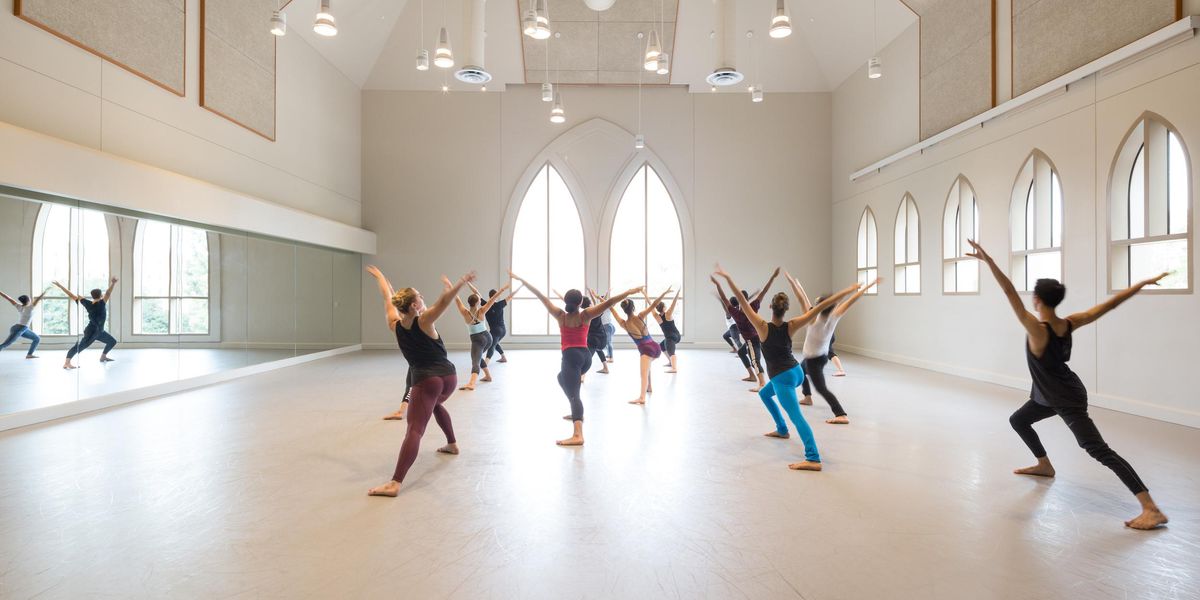BODYTRAFFIC Redefines L.A. Dance
BODYTRAFFIC isn’t the kind of company you expect to find in Los Angeles. Sure, the city has long been a major dance hub, employing hundreds of dancers for work in film and TV. But palm trees and ocean breezes have rarely been associated with gritty contemporary choreography.
Yet in just seven years, BODYTRAFFIC has emerged as a force on the concert dance scene. Even without a name director like Benjamin Millepied, it’s become a talk-about for its fierce performances in original repertoire by today’s top contemporary choreographers: Hofesh Shechter, Kyle Abraham, Barak Marshall, Stijn Celis, Zoe Scofield and Andrea Miller, among others. This month, the company is creating a premiere with Victor Quijada, and a new project with 2013 Princess Grace Choreography Fellowship winner Loni Landon is in the works.
The troupe is the brainchild of Lillian Barbeito and Tina Finkelman Berkett, who met in an L.A. ballet class in 2005 and, as Barbeito puts it, “hit on each other in a dancer way.” Barbeito had already relocated to L.A. to join her filmmaker husband, and Berkett, whose husband is from L.A., would follow in 2007. They each had impressive resumés, boasting such gigs as Aszure Barton & Artists and Baryshnikov’s Hell’s Kitchen Dance (Berkett), and the Grammys, music videos and a feature film by Spike Lee (Barbeito). Motivated by the desire to perform strong contemporary choreography, the pair soon dreamed up a project called BODYTRAFFIC. “We wanted an unforgettable name that was specific to dance and to Los Angeles,” explains Barbeito. “Anyone who has ever driven on the 405 Freeway understands immediately.”
Today, BODYTRAFFIC’s 10 stylistically elastic dancers go from the raw intensity of Shechter’s Dust to the hyper-gestural dance theater antics of Marshall’s Monger to the classic contemporary ballet lines of Celis’ Fragile Dwellings. Unsurprisingly, they come from a variety of backgrounds: Some trained classically at major academies like the School of American Ballet, while others only began formally dancing in college. And because the company’s contracts only cover 25 to 30 weeks, a few do commercial work on the side. But Berkett (who still dances with the company herself) says, “They all must be fearless.”
“These dancers are facile movers with powerful attack. The physical conversation we had was so exciting. I went in a slightly different direction for me: Kollide has a contemporary ballet flavor. It’s funny, now my own company wants to do the piece!”—Kyle Abraham
So how has such a young company managed to line up such high-profile choreographers? By playing the patience card. For example, the directors first approached Shechter in 2007. It took until 2014—and many follow-ups (“We are known for being relentlessly charming,” says Barbeito)—for the companyto premiere his Dust. “I love BODYTRAFFIC to bits,” says Shechter today. “Not only do they have this wonderful family feel, they perform with such raw intensity.”
Barbeito and Berkett also have a good eye for emerging talent: “We tend to get them right before they blow up,” says Barbeito. The pair knew they wanted to work with Abraham after seeing The Radio Show in 2011. “His voice was so distinct,” says Berkett. “It had all the right elements:He used exquisite technique across different genres, but it was also theatrical with both hilarious and heartrending moments.” BODYTRAFFIC premiered Abraham’s Kollide, the first piece he created after becoming a MacArthur Fellow, in October 2013.
However, the pair has also figured out how to use their location to their advantage. “Okay, so we have aimed our MacBooks out the window while Skyping,” confesses Barbeito. “The lure of palm trees and curiosity about the L.A. scene can be pretty persuasive.”




